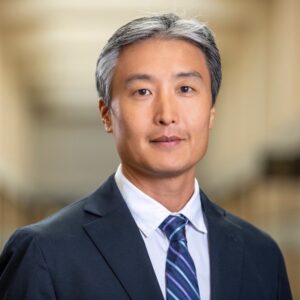Tracking environmental enhancements
When the National Institute of Medicine issued its report to Congress on the condition of the nation’s nursing homes as of 1986, few saw the profound effect it would have on the long-term care (LTC) industry in this country. The report’s recommended reforms found their way into the Nursing Home Reform Act contained in the Omnibus Budget Reconciliation Act of 1987 (OBRA ′87). They mandated that residents in nursing environments were to receive quality care aimed at their “highest practicable physical, mental, and psychosocial well-being.”
OBRA ′87 created a radically new vision for the industry-one that depended on nursing homes crafting new opportunities for the fullness of life in residents of widely varying capacities. They were to do this by focusing on both quality-of-life and quality-of-care issues. This was, and remains, an enormous challenge.
State regulatory agencies are required to enforce the provisions of OBRA ′87 and to promote and support initiatives that improve the overall quality of nursing homes. One such initiative is the North Carolina Coalition for Long Term Care Enhancement Grant Program. In 1998, the state’s Division of Health Services Regulation (DHSR) began to use civil money penalty funds collected from out-of-compliance nursing homes to fund demonstration grants in support of aspects of the Eden Alternative philosophy.1
When Bill Thomas promulgated the Eden Alternative doctrine, embedded in it were core elements used as tools to transform a traditional nursing home into what he called a “human habitat.” These elements were principally an empowered staff and teams, and the enhancement tools of intergenerational initiatives, pets, and living plants. Homes subscribing to the Eden Alternative philosophy usually have most or all of these enhancements in place. No claim is made that these elements in any sense define the core culture of an Eden Alternative home. However, they have been found to be reliable markers for identifying homes engaged in environmental transformation
From this simple beginning grew the state’s current grant program, which supports a wide variety of enhancement initiatives aimed at implementing the intent and mandate of OBRA ′87.
Measuring enhancements
The objective of environmental enhancement is to restore choice and control to residents in LTC settings. Homes can do this better when their physical environments are aligned with their unique cultures of care. To assess the extent to which its nursing homes were changing their operations and environments in this fashion, North Carolina regulators began asking them about their experiences with culture change.
Each year, as part of the annual license renewal application, nursing home operators are asked what environmental enhancements they have implemented during the previous 12 months. Data collected from this source for the past eight years form the basis of this report.
The data clearly show that creating and sustaining culture change is a complicated social process.2
Early in the course of this study, the limitations that accompany self-assessment as a research tool were examined at length. The notion that operators might over-report their enhancement rates was debated. However, there was no apparent reason for operators to report nonfactual information to the state. If there was a bias during self-reporting, it was operating in the direction of under-reporting rather than over-reporting because of a persistent misunderstanding among operators that environmental enhancements are in conflict with nursing home regulations. Therefore, the data herein reported are likely to be valid. The one area of self-reporting found to be unreliable was with respect to what enhancement philosophy was being implemented, and that question has been dropped from the current surveys
Some homes begin enhancement slowly and tentatively, while others initiate and move forward with the transformation process more aggressively. Most nursing homes in the state have started this process at least once within the past eight years. However, a significant number of homes in North Carolina have never started to enhance at all.
Figure 1 shows the environmental enhancement elements that the state tracks, examplified by one’s home’s history, starting with the eight core elements of the Eden Alternative philosophy. Since 2000, when DHSR began to survey culture change, other enhancements have been added to the tracking record.3
The following is the history of the elements included in the environmental enhancement survey instrument. The 2000 survey included cats, dogs, birds, children, plants, gardens, staff empowerment, teams, other enhancements plus “enhancement philosophy” followed. In 2004, the “other enhancements” element was divided into “other animals” and “other enhancements,” “enhanced building elements,” and “enhanced dining options” were added. In 2007, four new elements were added: neighborhoods, bathing enhancements such as spas or the “Bathing Without a Battle” routines, aromatherapy, and Snoezelen programs
These elements appear chronologically to the right of the original eight (see
figure 1). Nursing home operators are also encouraged to list any enhancements unique to them, and many have done so. These are tallied under the headings “other animals” and “other enhancements.” No elements have been dropped from the survey instrument since use began in 2000.
An environmental enhancement footprint showing one home’s eight-year history of implementing and sustaining common elements of culture change
The cells in figure 1 display one home’s enhancement record, a pattern that might be called an “environmental enhancement footprint.” This graphic pattern shows a home’s multiyear experience with elements of culture change in a way that allows for quick and accurate comparative analysis. In 2000, this home had at least one resident dog and one or more resident birds. In 2001, the home received an enhancement grant from the state and added plants and gardens along with an intergenerational program. In 2002, the home developed programs for staff empowerment and created teams in the nursing home. In the years shown above, this community kept its environmental enhancements in place and sometimes added more. This home was dubbed “the poster child for sustainable culture change.” In fact, few homes in this study display such an orderly enhancement pattern.
Enhancement rates
The annual enhancement records for the 392 skilled nursing homes licensed in North Carolina over the years 2000-2007 reveal how aspects of culture change work across a large number of care communities. Of these 392 homes, 259 (66%) have in the last eight years implemented at least one environmental enhancement associated with culture change. The range of implementation is from one to 16 elements, with an overall average of 4.26 enhancement elements. Not surprisingly, the process of adopting and sustaining environmental enhancements has proven to be extremely fluid.
Figure 2 graphs the annual rates of environmental enhancements reported by all nursing homes in the state. Both the “no enhancements” line (blue) and the “one enhancement” line (red) show considerable volatility when compared to the average rate of enhancements or “four enhancements” line. For this reason, the average rate (hatched line) is a more meaningful measure of underlying environmental enhancement.
Annual rates of environmental enhancement for all North Carolina skilled nursing homes, 2000-2007
In that chart, the percentages of “no enhancement” homes significantly overestimate the true number of homes resistant to change. The real rate of sustained resistance-i.e., the number of homes that have never implemented any enhancement in the eight years of this study-is only 34% (133 homes), whereas the number of homes with no enhancements for a particular year range from a high of 70% in 2000 and 2001 to a low of 46% reported for 2005.
NC enhancement pattern
Almost every skilled nursing home in North Carolina that initiated culture change through adopting environmental enhancements began with some combination of the “fur and feathers” enhancement tools associated with the Eden Alternative. Figure 3 displays this pattern clearly. The nine enhancement elements shown in this figure are those that have been tracked throughout all eight years of this study. The bars represent the prevalence of an individual element in the total multiyear pool of enhancements, and these levels are referenced to vertical axis to the left. The black diamonds show the number of homes reporting that element at each annual survey, expressed as a percentage of the 259 homes that had ever implemented any enhancement over the eight years of the survey; these levels are referenced to the vertical axis to the right.
Prevalence by rank of the individual enhancement elements tracked and the percentage of ever-enhanced homes reported implementing the element, for the period 2000-2007
In general, there is a rough correspondence between how common an enhancement element is and how many homes report having adopted it. Plants ranked highest in prevalence, and were tried by more homes than any other enhancement element (214 of the 259 homes provided live plants at one time or another for their residents to enjoy). Similar correspondences were found for the enhancement elements “birds,” “gardens,” “intergenerational programs,” “unique enhancements,” and “dogs,” in that order.
But this pattern of rough correspondence does not prevail for the two enhancements circled in blue (figure 3). The percentages of enhanced homes that report having empowered their staff and organized them into teams are located above the corresponding prevalence lines. The data collected show that some version of caregiving teams has been tried by 149 homes in North Carolina, but never more than 14% of all homes in a given year reported the presence of teams. This is cause for concern because staff empowerment and teams are arguably the most sensitive markers of deep culture change measured in this survey. The data suggest that these elements may be the most volatile while the “green” enhancement elements (i.e., plants and gardens) are the most sustainable. Cost alone is unlikely to explain this volatility, for teams share both high initial implementation costs and ongoing maintenance costs with other enhancements such as gardens. Yet gardens are almost never abandoned once implemented, while teams were among the least sustainable enhancements we documented.
More specialized enhancements focused on the built environment. Forty homes report altering their buildings to accompany culture change, while 129 report creating dining specializations in support of resident choice. Fifty-six nursing homes report the presence of so-called “neighborhoods,” which may be a building attribute or a social attribute of a home’s operations, or both. A few homes report specialized clinical enhancements, such as aromatherapy (41 homes) or Snoezelen (23 homes), but both these items are new enhancements as well as new survey items, which may explain their low prevalence as yet.
Overall, the enhancement patterns that emerge from the environmental enhancement footprints for 392 nursing homes over an eight-year period show that most homes in North Carolina are actively experimenting with many enhancement elements. In addition, they are doing it their own way, judging from the presence of unique enhancements in most homes undergoing transformation.
Location makes a difference
Highly enhanced homes for the most part cluster relatively near each other, in twos or threes, across all ownership types. These geographic clusters are not related to the size of a community or its number of nursing homes. Clustering may reflect two factors: the home’s client base and its labor force. The existence of these clusters suggests that environmentally enhanced homes may create demand both for their services and for their workers. But because unenhanced homes are located near highly enhanced homes and possibly market their services to the same clients, simple social forces, such as cultural diffusion, cannot explain these patterns. A more likely explanation is that environmental enhancement philosophies are shared directly through unique local friendship networks that influence both staff and clients, bypassing those who are not in these informal networks.
There is little in this study to explain why a third of the state’s homes have not yet embraced culture change, especially when they are located adjacent to highly enhanced homes. Types of ownership (corporate vs. independent, large multifacility corporations vs. small multifacility corporations, for-profit vs. not-for-profit) apparently have no effect on enhancement rates. While a disproportionate number of highly enhanced homes are located on continuing care retirement community (CCRC) campuses, most of the state’s CCRCs do not maintain highly enhanced skilled nursing homes. Thus, above-average financial resources are neither necessary nor sufficient for a community to achieve a highly enhanced profile.
Conclusion
The data from North Carolina portray homes that are actively choosing unique and distinctive ways in which to change how they meet their mission. The majority are “normalizing” their communities by redesigning their environments to create familiar, residential surroundings for residents and those who help care for them. These changes are reflected in each homes’ unique enhancement “footprint.” When considered together, these images all point to a very dynamic culture-change process producing no one preferred path to transforming cultures of care.
Kaye Brown, PhD, is Adjunct Associate Professor, Biological Anthropology & Anatomy, Duke University, Durham, North Carolina. Nadine Pfeiffer, BSN, is Program Manager, North Carolina Department of Health & Human Services, Division of Health Service Regulation, Administrative Section, Raleigh, North Carolina. For further information, contact Dr. Kaye Brown at
kaye.brown@duke.edu, (919) 668-3348, or fax (919) 660-7348.
To send your comments to the authors and editors, e-mail brown0509@iadvanceseniorcare.com.
Sidebar
At a glance…
Since 1998, North Carolina has tracked environmental enhancements in its nursing homes in support of aspects of the Eden Alternative philosophy. The majority of homes are “normalizing” their communities by redesigning their environments to create familiar, residential surroundings for residents, building each home’s unique enhancement “footprint.”
Long-Term Living 2009 May;58(5):16-19
I Advance Senior Care is the industry-leading source for practical, in-depth, business-building, and resident care information for owners, executives, administrators, and directors of nursing at assisted living communities, skilled nursing facilities, post-acute facilities, and continuing care retirement communities. The I Advance Senior Care editorial team and industry experts provide market analysis, strategic direction, policy commentary, clinical best-practices, business management, and technology breakthroughs.
I Advance Senior Care is part of the Institute for the Advancement of Senior Care and published by Plain-English Health Care.
Related Articles
Topics: Articles , Facility management , Operations











